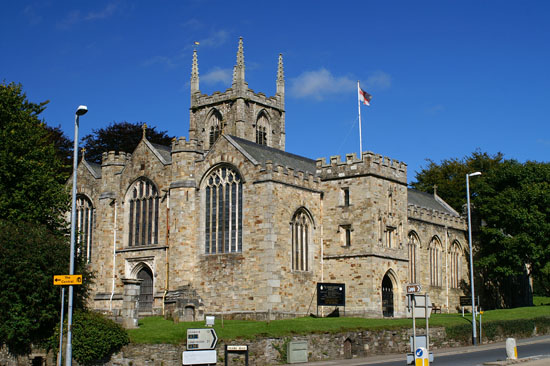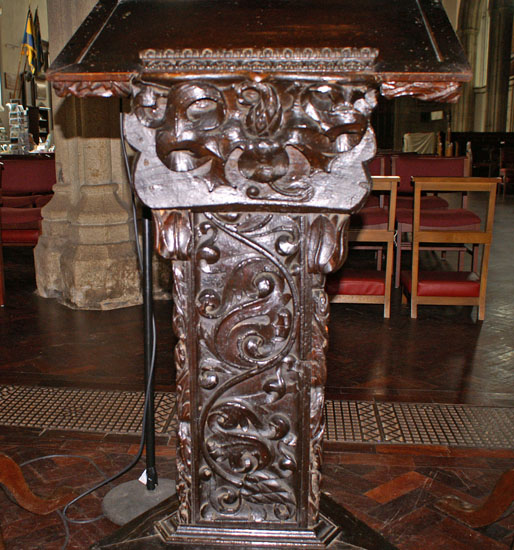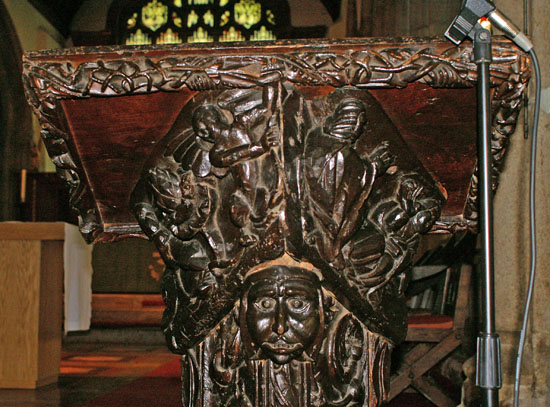|
Alphabetical List |
|
|
|
|
|
|
|
County List and Topics |
|
|
|
Please sign my Guestbook and leave feedback |
|
|
||||||||||||||||||||||
|
The casket is made of painted ivory, bound with bronze and sates from 1170. The panels are painted with birds and spiral motifs. It is believed to have been made by Norman craftsmen in Sicily which by then the Normans had conquered. It was hidden away at the Dissolution of the Monasteries, lost, rediscovered by accident, in 1831, displayed in 1957, stolen again and recovered near Sheffield. Amongst all the “miracles” associated with Petroc, perhaps the biggest is that we still have his casket! The church today - the biggest in Cornwall - dates from 1469-72. It has the usual Cornish wagon roof with some decent bosses. Otherwise, in truth, it is pleasant but unremarkable. The Norman font, however, is outstanding. On the bottom are some really “nice” monsters entwined with foliage. At each corner are the faces of angels. Altarnun has similar corner faces, but theirs are grotesque, There is plenty of gorgeous scroll decoration in between. It is outstandingly well-preserved. |
 |
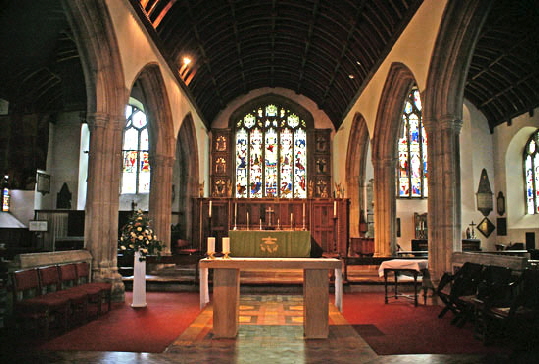 |
|||||
|
Left: Looking towards the east. The arcade is typical Cornish perpendicular with very plain capitals. The wagon roofs to chancel, nave and aisles - also typically Cornish - give a pleasing symmetry. Right: The chancel. It was re-designed in 1931. |
||||||
 |
||||||
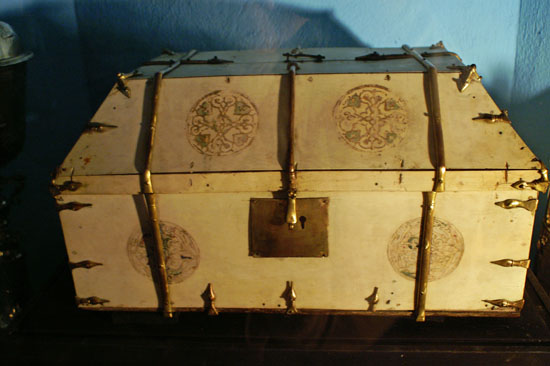 |
||||||
|
Left: St Petroc’s casket within its glass case. Right: The fine tomb of Thomas Vyvian who died in 1533. He was the penultimate Prior of Bodmin before the Dissolution and his tomb was moved here from the priory. The stone is Cataclewse from Harlyn Bay on the north coast of Cornwall. |
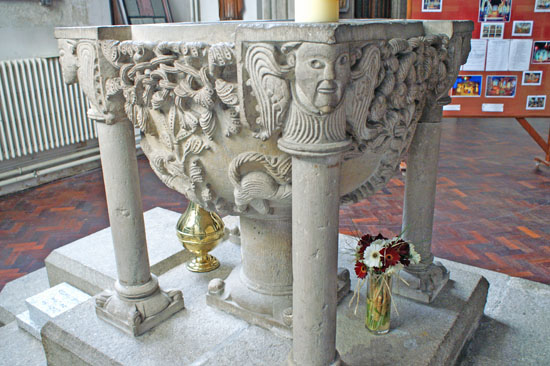 |
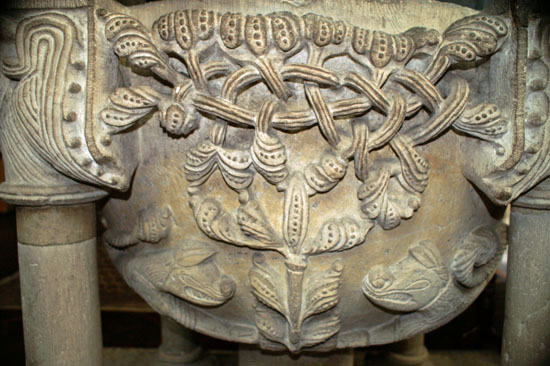 |
||
|
The Norman font is simply delightful and was carved to a very high standard. It is quite an unusual structure: a square profile around the top with a bowl shape below. The corners are supported by fine round pillars and there is a stumpy fifth pillar in the middle. The font has angels at each corner where we are much more used to seeing human or grotesque heads. The decoration as a whole, however, is concerned with the struggle between good and evil. Around the bowl of the font we see monsters and beasts. |
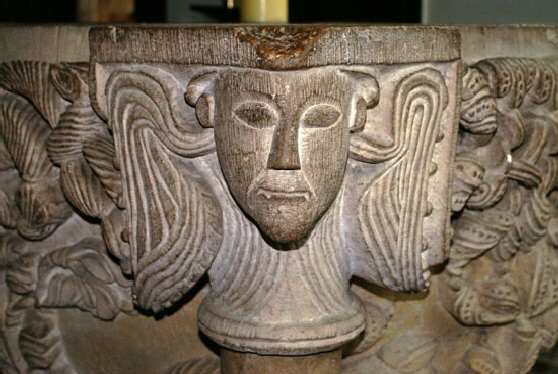 |
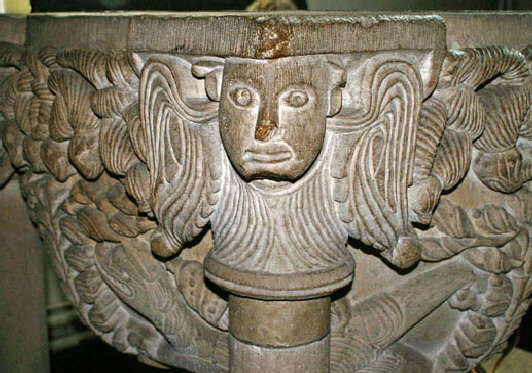 |
||||
|
Two of the angels at the corners of the font. |
|||||
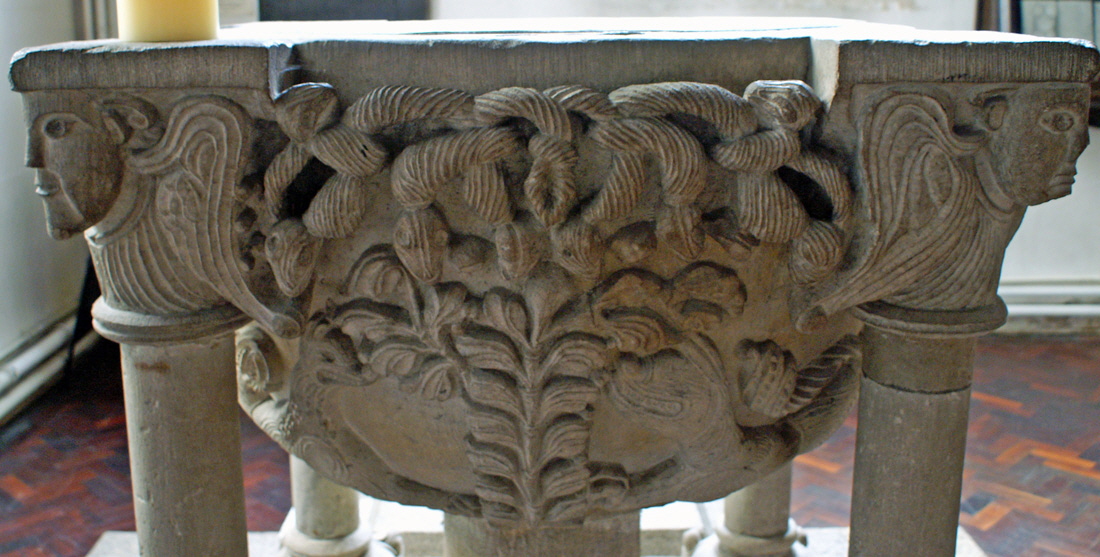 |
|
A close up of one side of the font. The plaited stem pattern towards the top is very finely carved. Below that a tree - a Tree of Life? - is below that, with beasts snarling on each side of it. It is an outstanding piece of carving: artistically one of the five best in England for my money. What makes it special is that the bowl has been carved away to leave the design in clear and very high relief. For all the world you could believe that the decorations have been stuck on. |
|
|
||||||||||||||||||||
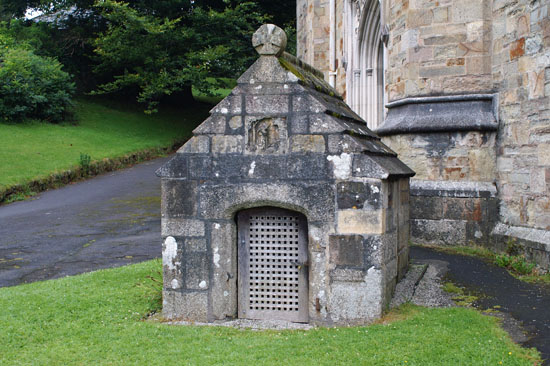 |
|||
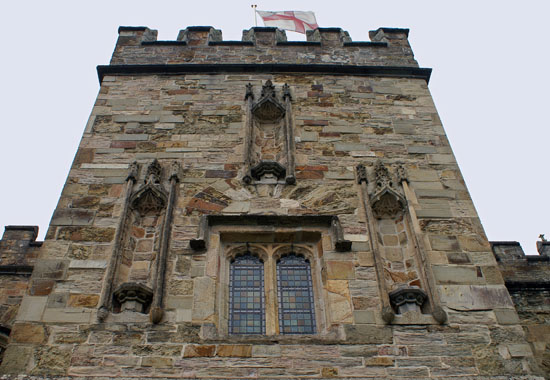 |
|||
|
Left: This building covers the Well of St Guron. It was he who established the first Christian cell her in AD500. Right: The porch with three empty niches, the statues probably removed during the Reformation or during Cromwell’s Commonwealth. Many churches have little “mysteries” - well at least to non-experts like myself. Here’s my one for Bodmin: what looks like a filled-in Romanesque arch above the existing window. Why? |
|
|
